Exceptional education in the digital age: our digital strategy
Queen Elizabeth’s School has a proactive and robust digital strategy which seeks to enhance the unique QE educational experience and to position our pupils so that they can embrace the huge potential of new technologies in our fast-changing world.
We aim to inspire our pupils, whether that’s by opening up new realms of possibility in the classroom through our 1:1 programme, or by stretching their digital skills in co-curricular activities as part of QE Flourish. Through QE Futures, they learn about emerging careers in fields such as AI, virtual reality, quantum computing, machine learning, sustainable technology, blockchain and robotics.
Our ever-evolving strategy is carefully considered and evidence-based, so that it builds on an already outstanding educational offer. We want to learn from the experience of others and avoid jeopardising the proven success of our current teaching & learning programmes by rushing after the latest technological fad. Worse still is the risk of actually damaging students’ cognitive development through technologies such as of AI.
We will, therefore, allow sufficient time for new technical solutions to be thoroughly researched and evaluated. We will conduct thorough risk assessment in terms of product safety, data protection & intellectual property. And we will provide high-quality training to give staff confidence in the use of any new tools with their pupils. We also want to encourage parents and pupils to give feedback along the way as we roll out new technological tools and solutions, so that we can gain additional insights.
In short, we aim to learn fast, but to move slowly.
At the heart of our digital strategy is the 1:1 programme. The programme involves the carefully planned, co-ordinated use of identical laptops. Boys use these in the classroom, for homework, and for independent study.
We seek to make our boys future-ready. The strategy acknowledges the importance of pupils being able to use technology both effectively and responsibly. Digital literacy is a sine qua non for the Elizabethan of today: Year 7 digital literacy lessons lay the groundwork, so that pupils can derive maximum benefit from QE’s ‘blended approach’ to education (that is, embracing both online and traditional teaching & learning methods) and go on to develop the digital skills they will need for their careers. In addition to the extensive measures taken to ensure online safety and effective cybersecurity, we develop among our boys an understanding of the impact that technology has on human behaviour and on the wider environment.
Technology can enhance the QE educational experience in several ways. In line with our emphasis on free-thinking scholarship, our digital strategy recognises how technology can help pupils extend their individual learning so that they engage in more challenging tasks. Technology offers boys opportunities to personalise their learning experience, particularly in revising for examinations. And the technological tools provided through our MS suite of applications can assist pupils who need additional support.
The SAMR model
We are embedding technology fully into the boys’ daily QE experience because we believe that, properly implemented, technology can entirely transform aspects of education. Educationalists have developed a model – SAMR (Substitution, Augmentation, Modification, Redefinition) – to explain how this transformation works:
- Substitution: in this first stage, technology replaces old methods, possibly saving time, money and effort, but with no functional improvement.
- Augmentation: technology remains a direct substitute, but the technology enhances the learning process.
- Modification: technology allows the design of interactive, dynamic tasks that would not be possible in a non-digital classroom.
- Redefinition: in this most sophisticated stage, technology is used to realise entirely new learning opportunities in ways that would previously not even have been conceivable.
Our initial work is focused on enhancement, which includes substitution and augmentation. Examples of the way in which technology is being applied include:
- Using OneNote, Word, and PowerPoint to replace traditional paper-based worksheets and books.
- Using self-assessment trackers and live controlled assessment access to best support student progress at any time.
- Using collaborative tools such as the OneNote collaboration space, Whiteboard and Planner to communicate and plan group activities remotely, saving time in class to allow for best progress to be made.
- Development of subject resources such as live marking quizzes for instant knowledge recall in Biology or using ArcGIS for data visualisation and mapping in Geography.
While the SAMR model typically emphasises collaborative learning benefits, we recognise that, with QE’s emphasis on free-thinking scholarship, our digital strategy must also make full use of the extensive opportunities technology offers for personalisation and for enhancing independent learning.
